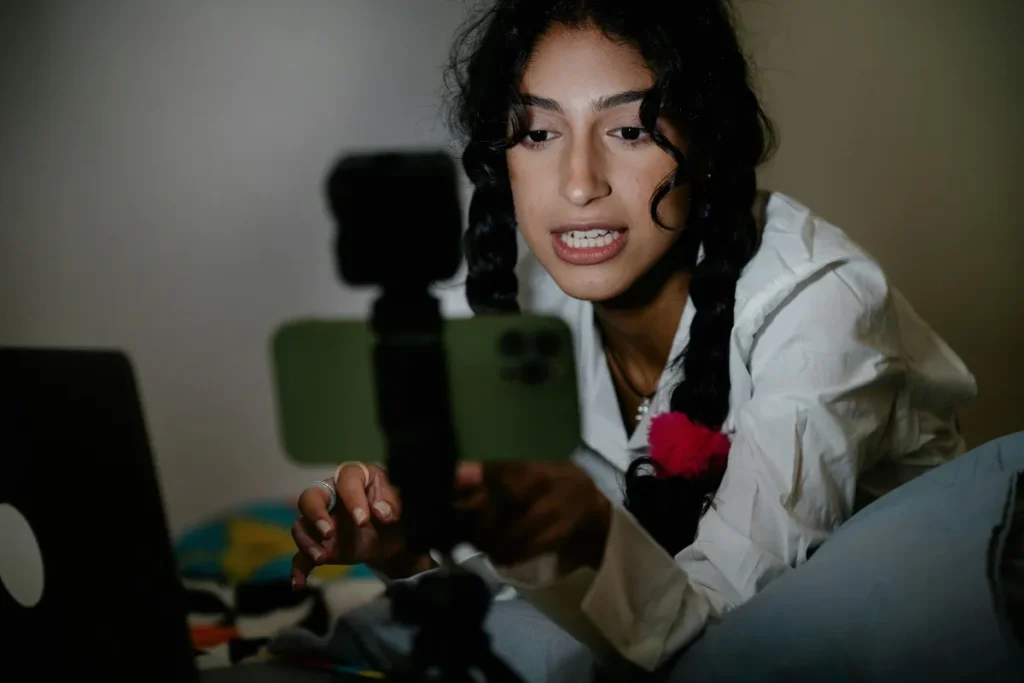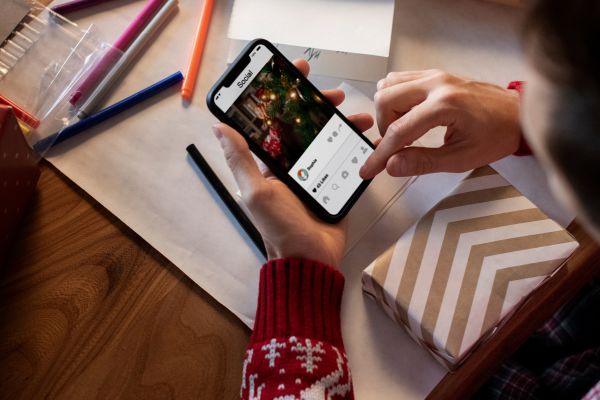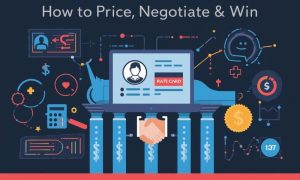As brands shift budgets toward creator partnerships, influencer marketing strategies have evolved from experimental to essential. The industry is projected to hit $24.1 billion by 2025 (Statista), driven by consumers’ growing distrust of ads and reliance on authentic recommendations. Yet, success isn’t guaranteed; without a data-driven approach, even high-budget campaigns can fall flat.
Influencer marketing delivers 11x higher ROI than traditional ads – but only with the right strategies.
In this guide, we’ll explore the most effective influencer marketing strategies brands are using today to boost awareness, increase sales, and stay ahead in an increasingly competitive digital world. Whether you’re launching your first campaign or refining your approach for 2025, these data-backed tactics will help you plan, execute, and scale with confidence.
New to influencer marketing and want to understand the basics first?
Explore our guide on What is Influencer Marketing and How Does it Work to get a clear picture of how brands and creators collaborate — and why it works so well.

What Is an Influencer Marketing Strategy & Why It Matters
An influencer marketing strategy is a structured plan that outlines how your brand will collaborate with influencers to achieve specific business goals, whether that’s boosting brand awareness, driving sales, building trust, or growing your social following.
It’s not just about picking a popular creator and hoping for the best. A strong strategy connects the right influencers, messaging, content formats, and distribution channels to your target audience in a way that feels natural and delivers measurable results.
Why does it matter? Without a clear strategy, influencer marketing efforts can become scattered, hard to track, and ultimately ineffective. Brands that approach influencer partnerships strategically are more likely to:
- Align campaigns with broader marketing goals
- Select influencers who truly resonate with their target customers
- Maximize ROI and optimize campaigns over time
- Build long-term brand equity, not just one-time exposure
In short, a thoughtful influencer marketing strategy turns casual collaborations into powerful growth engines for your brand.
Strategy vs. No Strategy: The Stark Difference
| Aspect | With Strategy | No Strategy |
| ROI | 5.20$ earned per 1$ spent | Wasted budget (43% of brands lose money) |
| Influencer Selection | Data-driven picks (audience alignment, fraud checks) | “Gut feeling” or follower count only |
| Content Quality | Brand-aligned, platform-optimized posts | Generic, off-brand promotions |
| Measurement | Clear KPIs (conversions, CAC, LTV) | Vanity metrics (likes, no sales tracking) |
| Long-Term Value | Repeat collaborations, ambassador programs | One-off posts with no follow-up |
| Brand Safety | Vetted creators, contract clauses | Risk of fake influencers or PR disasters |
Top 7 Influencer Marketing Strategies
The influencer space is evolving fast, and brands that adapt smartly will be the ones who stand out. Here are the top influencer marketing strategies you’ll want to prioritize in 2025:
1. Nano & Micro-Influencer Collaborations
Partnering with nano- and micro-influencers (typically with 1K–100K followers) is one of the smartest moves for brands today. These creators often have higher engagement rates, stronger trust with their audiences, and lower collaboration costs than macro-influencers. They may not have millions of followers, but their communities are highly loyal and often drive better ROI for niche targeting.
How to execute:
- Use tools like Hypefy to find creators in your niche.
- Launch a “100 Micro-Influencer Challenge”
2. Long-Term Ambassador Programs
Instead of one-off posts, brands are building long-term relationships with influencers to create more authentic, consistent advocacy. Ambassador programs allow influencers to weave your brand naturally into their regular content over time, strengthening credibility and creating lasting brand impressions.
3. User-Generated Content (UGC) Campaigns
Encouraging your customers and followers to create content about your brand fuels trust and relatability. UGC campaigns can multiply your content output without the high production costs, and audiences often trust peer recommendations more than polished brand ads. Use hashtags, giveaways, or simple challenges to encourage participation.
4. AI-Driven Influencer Matching
Choosing the right influencer is critical, and AI tools like Hypefy are making it easier than ever. These platforms analyze audience demographics, engagement quality, content style, and brand fit to suggest ideal influencers for your campaign. Smart matching ensures you’re not just working with someone popular, you’re working with someone effective.
5. Cross-Platform Campaigns (Instagram + TikTok + YouTube)
No single platform dominates consumer attention anymore. Successful brands are running cross-platform influencer campaigns, weaving content across Instagram, TikTok, YouTube, and even LinkedIn, depending on the audience. Cross-platform exposure reinforces messaging, increases reach, and adapts to how modern consumers engage across multiple channels.
6. Affiliate & Performance-Based Partnerships
Many brands are shifting to pay-for-performance influencer models, offering commissions based on sales or leads rather than flat fees. Affiliate programs with influencers help align incentives and ensure you’re paying for real, measurable results, not just exposure. Plus, performance-driven creators are often more motivated to promote your brand effectively.
7. Crisis-Proof Strategies (Adapting to Algorithm Changes)
Social media algorithms are constantly changing, affecting organic reach and engagement. Brands that succeed are developing crisis-proof influencer strategies, such as building owned email lists, diversifying platform presence, and using paid amplification to boost key influencer posts when needed. Being flexible and proactive helps protect your campaigns against sudden platform shifts.
Quick Tip: The strongest influencer marketing strategies combine multiple tactics, like mixing UGC with long-term ambassadors, rather than relying on just one approach. Integration is key for 2025 and beyond!

Budgeting for Influencer Marketing Campaign
Setting the right budget is critical for running a successful influencer campaign, without overspending or underinvesting. Understanding influencer cost ranges and how to allocate your budget strategically will help you maximize your influencer marketing ROI.
Influencer Cost Breakdown
Influencer pricing can vary widely based on audience size, platform, industry, and the scope of work. Here’s a general cost estimate by influencer type:
- Nano-Influencers (1K–10K followers):
$100 – $500 per post
(Best for authentic engagement and local/niche targeting) - Macro-Influencers (100K–1M followers):
$1,000 – $10,000 per post
(Ideal for broader reach with a still-engaged audience) - Mega-Influencers (1M+ followers or celebrities):
$10,000+ per post
(For massive exposure, but often lower engagement rates)
Keep in mind: Prices can shift depending on usage rights, content type (static post vs. video), exclusivity agreements, and whether cross-posting on multiple platforms is included.
How to Allocate Your Influencer Marketing Budget for Maximum ROI
A smart budget strategy doesn’t just chase the biggest names, it invests where results are most likely. Here’s a recommended approach:
- Blend Influencer Tiers: Don’t put your entire budget into one mega-influencer. Mix nano, micro, and macro-influencers to diversify reach, boost engagement, and reduce risk.
- Reserve a Portion for Paid Amplification: Set aside 10–20% of your budget to boost top-performing influencer content through paid ads. This can dramatically increase reach and conversions beyond organic performance.
- Budget for UGC Rights: If you want to reuse influencer content in your own channels (website, ads, social media), negotiate content usage rights upfront and budget for them; it’s usually worth the extra cost.
- Plan for Long-Term Collaborations: Instead of one-off sponsorships, allocate part of the budget for multi-post or multi-month partnerships. Longer collaborations usually cost less per post and build stronger brand affinity.
Check out our full guide on Influencer Marketing ROI: How to Measure & Maximize Returns here.

Measuring Success: Essential KPIs for Influencer Campaigns
Once your influencer campaign is live, tracking the right key performance indicators (KPIs) is crucial to understanding its true impact. Without clear metrics, it’s difficult to assess what worked, what didn’t, and where to optimize for future campaigns.
Here are the most important KPIs to measure for influencer marketing success:
1. Engagement Rate:
- Measures how actively the influencer’s audience interacts with the content through likes, comments, shares, and saves.
- Formula: Engagement Rate = (Total Engagements ÷ Total Followers) × 100
- High engagement often signals authentic interest and can predict better conversion rates.
2. Reach and Impressions:
- Reach is the number of unique people who saw the influencer’s content.
- Impressions are the total number of times the content was displayed (including multiple views by the same person).
- Both are useful for understanding brand visibility and awareness generated by the campaign.
3. Click-Through Rate (CTR):
- CTR measures how many people clicked on the influencer’s link compared to how many saw it.
- Formula: CTR = (Total Clicks ÷ Total Impressions) × 100
- A strong CTR indicates effective call-to-actions (CTAs) and content relevance.
4. Conversion Rate:
- Tracks how many people completed a desired action, like making a purchase or signing up, after engaging with influencer content.
- Use UTM tracking links, promo codes, or dedicated landing pages to capture this data accurately.
5. Customer Acquisition Cost (CAC):
- Calculates how much it costs your brand to acquire each customer through the influencer campaign.
- Formula: CAC = Total Campaign Spend ÷ Number of New Customers Acquired
- This KPI helps you compare the cost-efficiency of influencer marketing against other acquisition channels.
6. Return on Investment (ROI):
- Ultimately, ROI shows the overall financial return on your influencer marketing efforts.
- Formula: ROI = (Revenue Generated – Campaign Cost) ÷ Campaign Cost × 100
- Positive ROI means the campaign contributed real value to your bottom line, not just vanity metrics.
7. Brand Sentiment and Brand Lift:
- Use surveys, social listening tools, and search volume analysis to gauge shifts in brand perception after a campaign.
- Did awareness grow? Was there a more positive conversation around your brand? These insights reflect long-term value beyond immediate conversions.
Need help tracking these KPIs? Learn how platforms like Hypefy automate campaign analytics.

How Hypefy Optimizes Your Influencer Strategy (End-to-End)
Managing influencer campaigns manually can be time-consuming and prone to error. That’s where Hypefy steps in – offering brands a smarter, faster way to run influencer marketing with precision and scale. Here’s how Hypefy helps optimize your influencer marketing strategies:
1. AI-Powered influencer discovery – Analyzes 500+ data points (audience demographics, brand affinity, fake followers) to find perfect creators.
2. Campaign management (All-in-one dashboard)
- Automated workflows: Brief creators, track content approvals, and manage deadlines in one place.
- Content collaboration: Streamline communication with content approvals, feedback, and version control.
3. ROI tracking & analytics – Tracking influencer marketing ROI is easier with Hypefy’s real-time analytics dashboard. You get access to clear data on engagement, reach, and conversions attributed to each influencer.
4. Streamlined payments – Handling payments across dozens of influencers can get messy fast. Hypefy simplifies this by automating influencer payouts in one place, ensuring secure, timely payments without manual follow-up. This helps brands maintain strong relationships with their creators and stay focused on growing campaign performance.
Final Thoughts: Build Smarter Influencer Strategies in 2025
Influencer marketing continues to offer some of the highest returns in digital marketing – but only when backed by the right strategies, tools, and tracking. By focusing on smart influencer selection, clear goals, and data-driven optimization, your brand can turn partnerships into real growth.
Want to see how Hypefy can streamline your influencer campaigns? Book a free demo today and start optimizing for real results.



